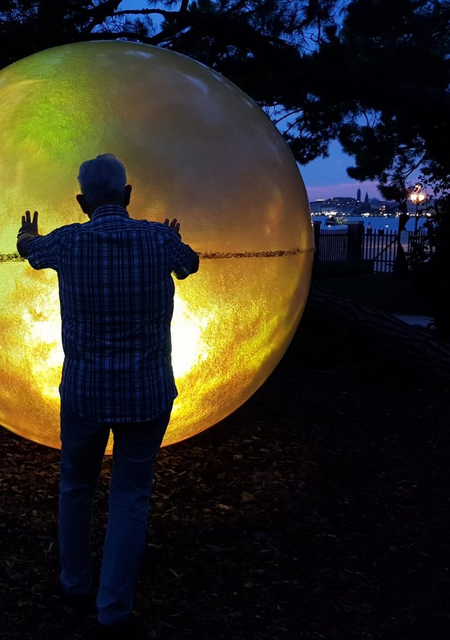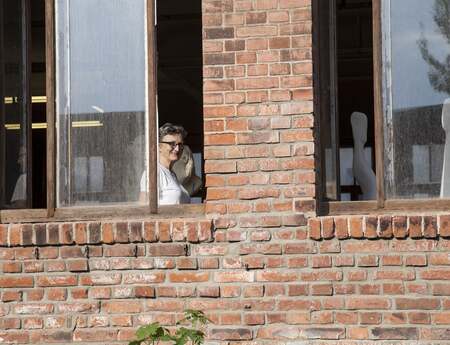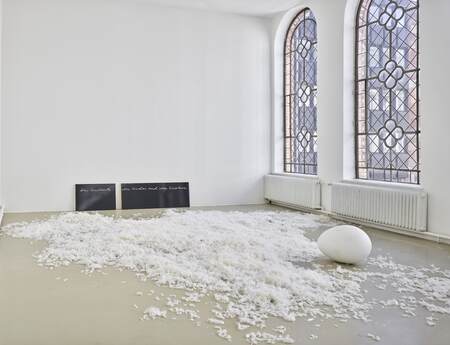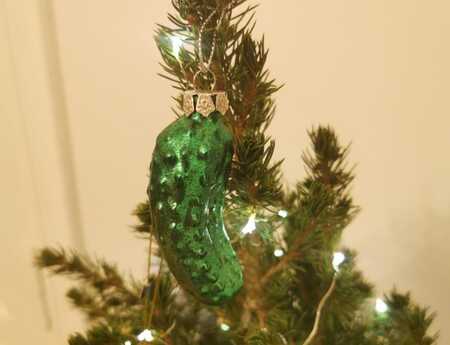Signposts Out of the Labyrinth of Falsified Realities
The Experience of sculpture network took us to the 58th Venice Biennale on August 22nd to 25th.
Under the guise of an ambivalent, enchantingly poetic charm, works by 79 artists reveal the uncertainties, fears and horrors of human existence.
Ralph Rugoff, director of the Hayward Gallery in London, curated this year's edition of the worldwide mother of all biennials. The ironic title May You Live In Interesting Times refers to a fake curse: an English proverb that has long been mistaken for an old Chinese curse. To draw attention to the crisis situation of his time, the diplomat Sir Austen Chamberlain handed down the Asian idiom in the 1930’s. Current crises and rumours surrounding fake news, Brexit, artificial intelligence, Trump, shift to the right, climate change, polluted seas, and the extinction of species occupy the artists at the Biennale.
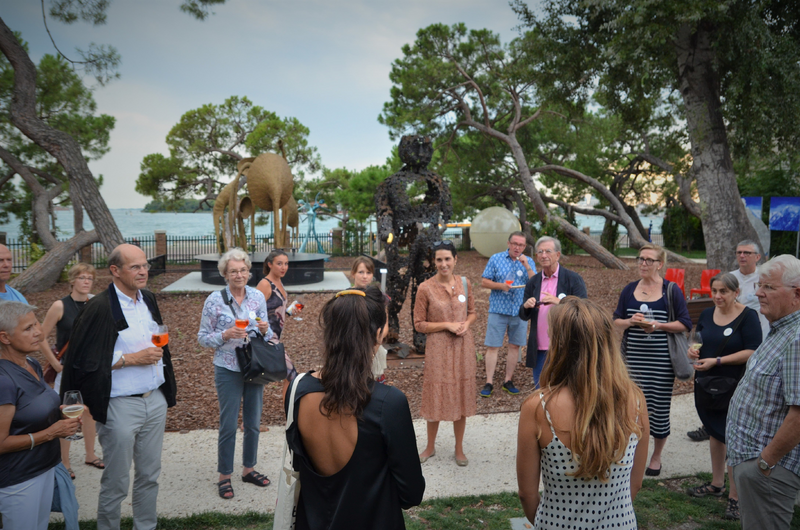
Our journey began in the Giardini di Marinaressa Sculpture Park of the European Cultural Centre. There the artist Anton Kerscher presented his metal sculpture Hey You (2018/19). The metal body of the monumental work has been worked on several times, has holes and has been visibly damaged despite the strength of the material. A deformed hemisphere, reminiscent of our earth, almost seems to break under the enormous weight of his feet. Only a large, shiny, golden index finger has been preserved and points to each individual visitor. It calls for personal responsibility towards the present problems of our world. The sculpture is part of the international exhibition project Personal Structures of the European Cultural Center, which, alongside Kerscher, presents around 200 international artists from 40 countries in the Giardini Marinaressa, Palazzo Bembo and Palazzo Mora. After a visit to other works by Carole Feuerman, Nadim Karam, Clifton Manghoe and more, the impressions of the first evening were discussed at a reception overlooking a Venetian sunset.
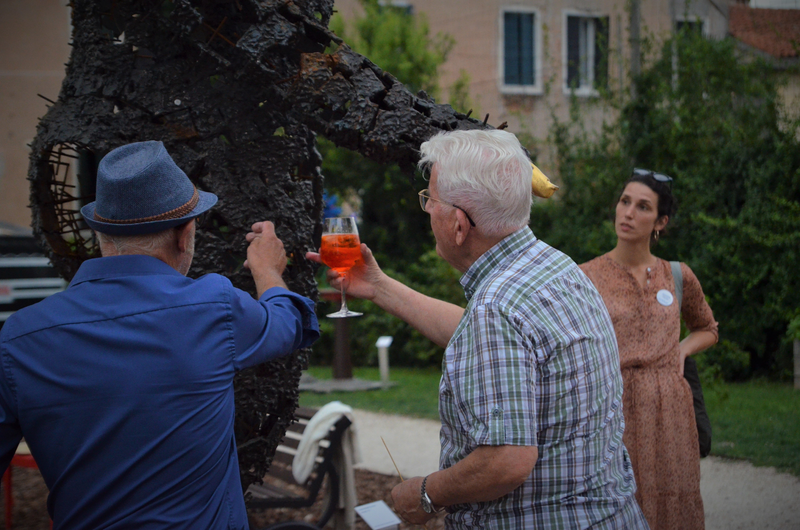
On the second day we explored the Arsenale, one of the two main venues of the Venice Biennale. Venice's former shipyard and armaments chamber was the world's largest pre-industrial production centre. On an area of 50,000 square meters, Rugoff and Delvendahl Martin Architects developed a labyrinth-like exhibition architecture made of veneer plywood on which figurative paintings, videos, photographs and sculptures in particular can be discovered. Both the Arsenale and the Giardini are showing works by the same artists this year.
In the entrance area there are disturbingly graceful night shots of the endangered inhabitants of Kolkata by photographer Soham Gupta. Screams, shots and explosions from the video installation 48 Movies of War by Christian Marclay infiltrate the exhibition space. A vertiginous loop from the screens of overlapping frames and sounds of war films. The banning direct view from the large-format self-portraits of the South African Zanele Muholi certainly calls for self-empowerment as she passes by. Dark Teresa Margolles’ installation The Search focuses on the disappearance of girls in the Mexican-American border town of Ciudad Juarez. Alexandra Bircken is the only one to use the height of the historical building of the Arsenale for her installation: lifeless, collapsed figures made of black latex hang above the steps of ladders, and a two-part motorcycle with cut cables hangs on the floor. The artist withdraws her speed from the motto "Higher, faster and further" and calls for a pause to watch herself go down on her way to the top. After that, John Rafman's brutal-bizarre game universe Dream Journal with surreal adventures of the Xanax Girl on an aimless quest for the soundtrack of Oneohthrix Point Never is drawn to John Rafman. Our tour ends with the controversial installation, Barca Nostra, by Swiss artist Christoph Büchel. It is named after the wreck of a refugee boat that capsized off Lampedusa in 2015. More than 700 people died in the accident.
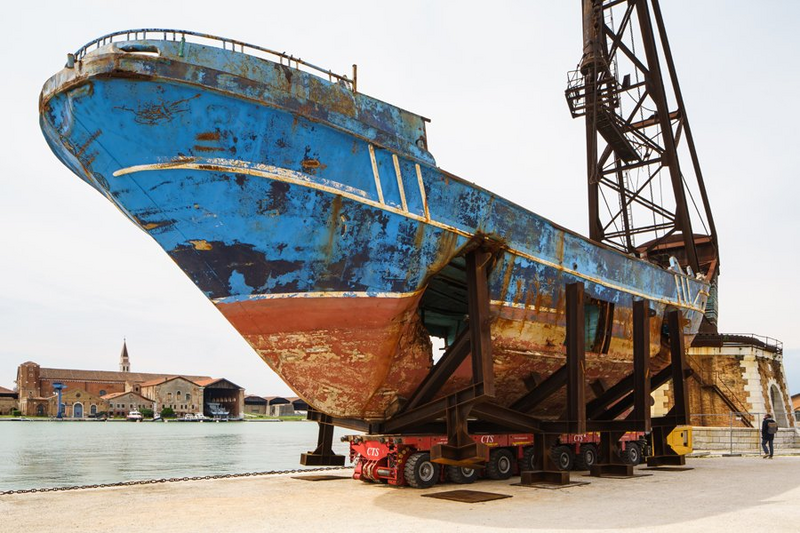
After the Arsenale we visited the Palazzo Bembo of the European Cultural Center. Built in the 15th century by the Bembo noble family, this impressive building is now a place of cultural encounters. It is located not too far from the famous Rialto Bridge directly on the Grand Canal and surrounding houses works by Nina Dotti, Helga Palasser, Tineke Smith, Sarah Gold, Nobuyoshi Araki, and more. After visiting the main exhibitions together, the participants of the Experience created their own programme - they recommend the performance in the pavilion of Lithuania (Golden Lion winner!), the Brazilian, Icelandic or Saudi Arabian pavilion for a further stay at dinner. Ghana's first pavilion and a visit to the Academia or Palazzo Grassi are also very popular. And don't forget Lido!
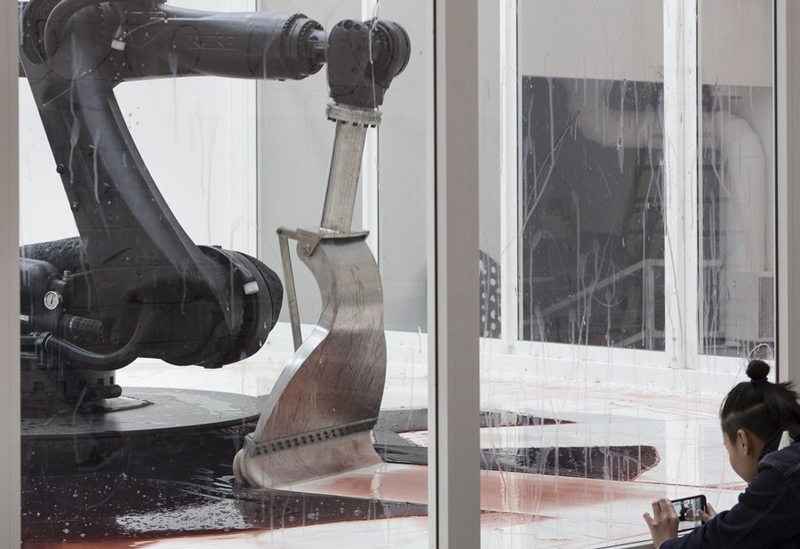
The third day took us to the second main exhibition site of the Biennale. The Giardini, the green gardens to the east of Venice which have been used by the Biennale since 1895 and house the Central Pavilion as well as the 29 national pavilions from different eras. One of the most impressive works at this year's Biennale is certainly Can't Help Myself by the Beijing artist duo Sun Yuan and Peng Yu. An industrial robot with its automated lifting arm moves a brush, sometimes swinging harmoniously, sometimes faltering. In Sisyphus mode, he tries in vain to mop up the blood-red pool of paint that spreads around him. The next moment, unpredictably threatening for outsiders, he slaps the liquid on the glass panes of his cage. Captured and displayed like a wild animal in a zoo, this work refers to technological fears and threats. Bloody experiences of violence at the borders between machines and humans and perhaps the hope of being able to control the uncontrollable extent of these developments.
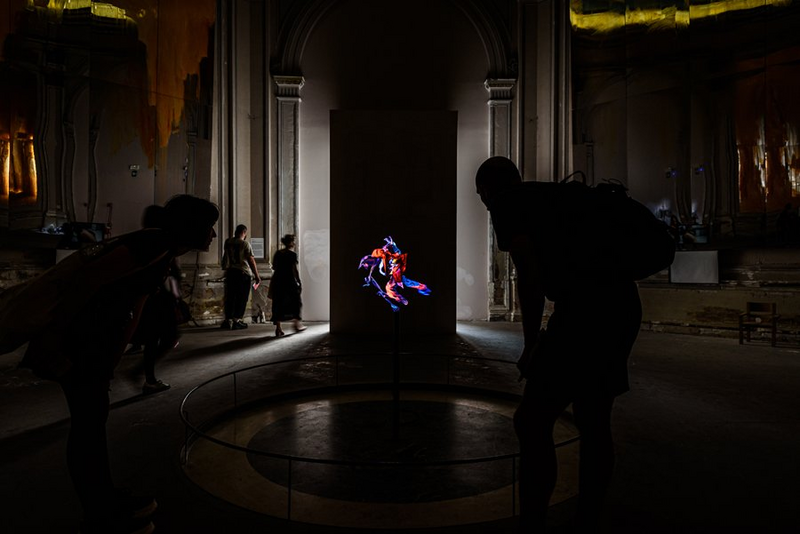
Another automated installation is the metal gate by the artist Shilpa Gupta, which repeatedly bangs with full force against an exhibition wall, leaving behind traces of its power like a blow mark. A gate that simultaneously opens and closes, reminiscent of a kind of boundary marker that can destroy itself and everything in its territory. Certainly, the octagon of the central pavilion is a highlight, in the darkened room a flickering Max Ernst hologram by Cyprien Gaillard, surrounded by an installation by Danh Vo and fragmented body casts by Yu Ji.
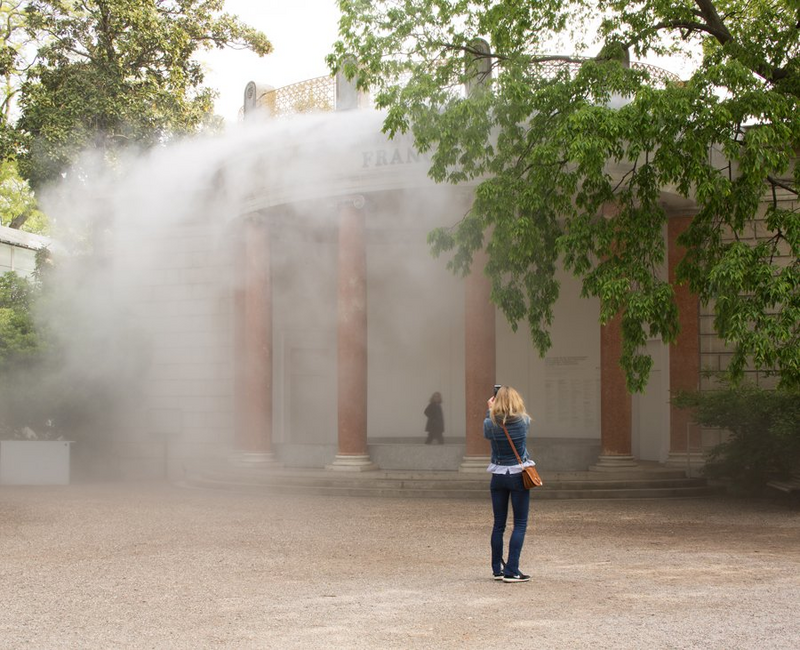
Another impressive work is the French pavilion, which the artist Laure Prouvost transforms into a poetic interspace. Water vapour rises from the outside, the entrance becomes an exit, and visitors enter through the bushes and cellar. Climbing up the stairs between rubble, visitors enter a room with a floor that is reminiscent of both the seabed and the sandy beach. Waste objects made of Murano glass, such as plastic bottles or food scraps, lie between the bodies of marine animals such as jellyfish and octopods in a blue-green shimmering floor sealed with cast resin. A white dove jumps around. The second room is reminiscent of the abdomen of an octopus - a multisensory perceptual miracle and the artist's favourite animal. In the flood of images of the film shown there, the dove reappears flying. The protagonists flee from Paris to Venice and let themselves fall from the roof of the pavilion as if they could fly as well - an escape into or out of a dream world?
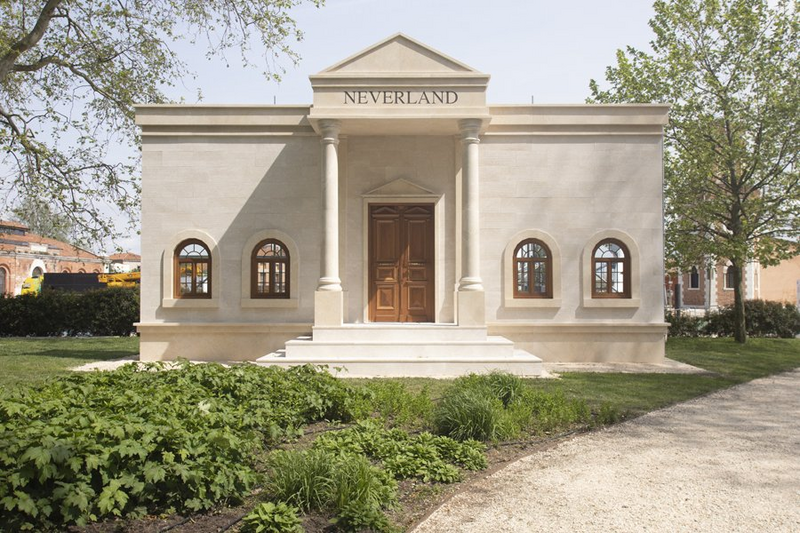
The cultural program of the day continued in the afternoon at Palazzo Mora of the European Cultural Center. One of the rooms houses a masterful fresco from the 18th century and we looked at works of art by Adriana Carambia, Raffy Napay and Judith Unger, as well as the interesting Biennale contributions of the Seychelles, Kiribati and Mozambique. During our dinner we shared our many impressions with each other. This Biennale vehemently refuses a straight line in its intended polyphonic openness. At the same time, it can be questioned to what extent the Biennale contradicts the boundlessness it propagates itself as a place of national pavilions. How can these power-political structures be dissolved? Where can statelessness be located? Halil Altındere's Scheinpavillon Neverland - No Man's Land is such a faceless place for the homeless of this world. Perhaps some works can be understood as signposts out of the impasse in the labyrinth of falsified realities: the rear entrances, the rethinking, turning around and turning around, going backwards instead of forwards, down instead of up, stopping and pausing, blindly searching without Ariadne's thread.
Author: Giannina Herion
Giannina Herion works freelance in culture and communication. In August, she led the sculpture network travel group through the streets and channels of Venice to the highlights of the Biennale.
Title: Ralf Kirberg at the Sculpture Park Giardini di Marinaresse/ European Cultural Centre. Photo: Giannina Herion
